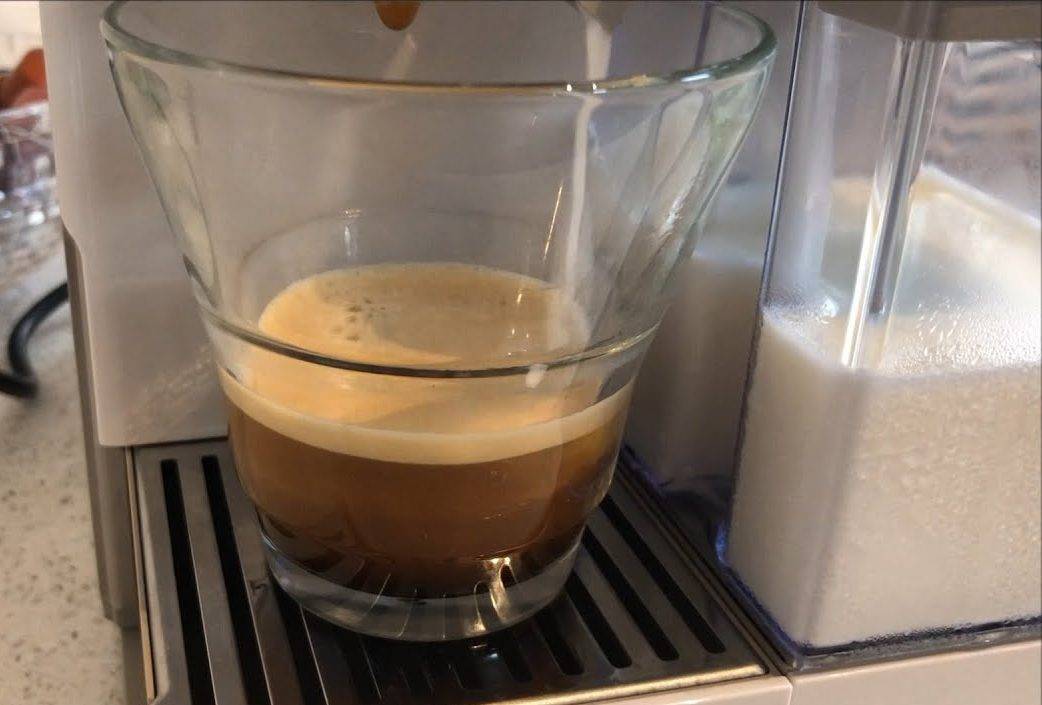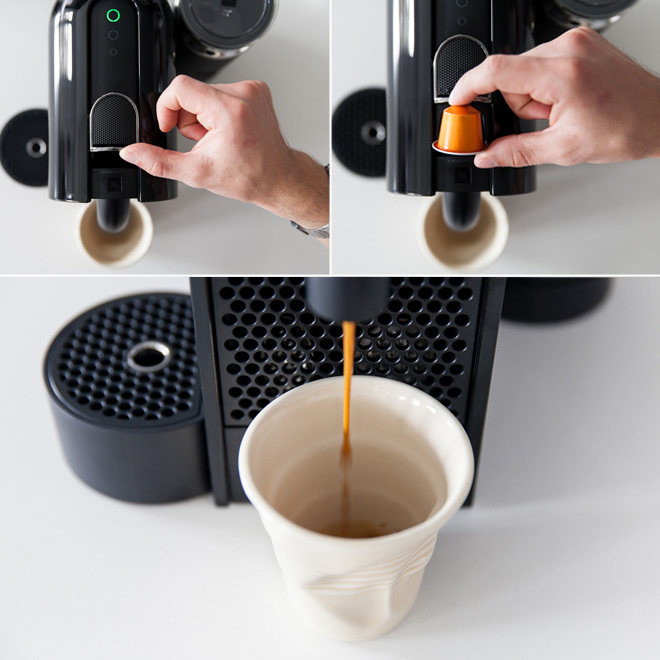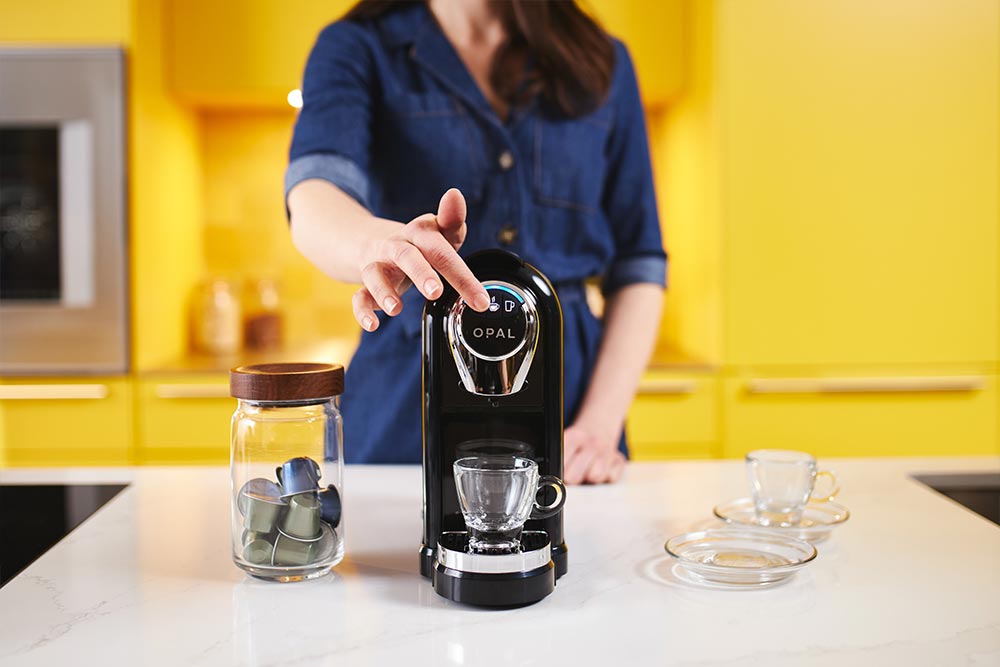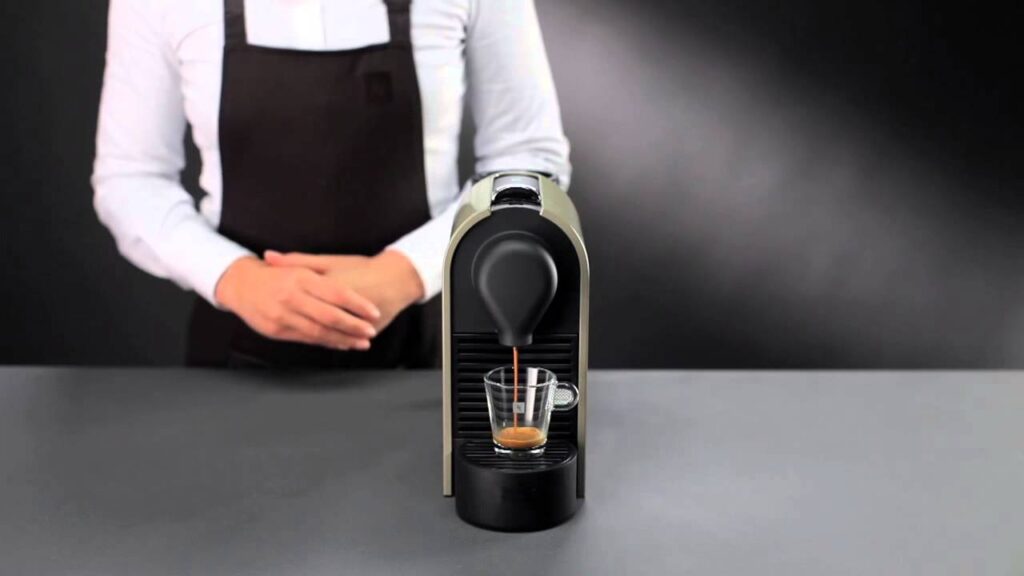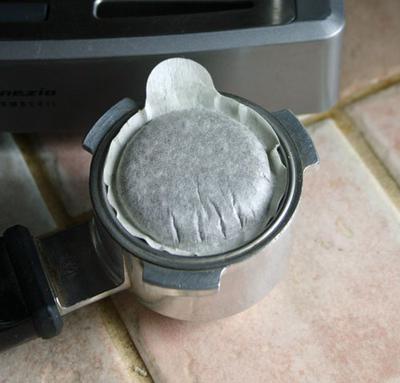So you’ve just bought a brand new espresso machine, and you’re excited to start making your own delicious cups of espresso at home. But wait, what do you do with those small, colorful pods that came with your machine? Don’t worry, we’ve got you covered. In this article, we’ll show you the ins and outs of using espresso pods, from selecting the right one for your taste buds to mastering the art of brewing a perfect shot. Say goodbye to overpriced coffee shop visits and hello to barista-like skills right from the comfort of your kitchen. Let’s get brewing!
Choosing the Right Espresso Pods
When it comes to enjoying a delicious cup of espresso at home, choosing the right espresso pods is essential. With so many options available in the market, it can be overwhelming to determine which one is best for you. However, by understanding the types of espresso pods, considering the flavor profiles, and checking the compatibility with your espresso machine, you can make an informed decision.
Understanding the Types of Espresso Pods
Espresso pods come in different types, such as ESE pods, Nespresso pods, and proprietary pods for specific machines. ESE (Easy Serving Espresso) pods are a popular option as they are standardized and can be used with various espresso machines. Nespresso pods are designed for the Nespresso machine, offering convenience and a wide range of flavors. Proprietary pods, on the other hand, are specific to certain machines, ensuring compatibility but limiting your choices.
Before purchasing espresso pods, make sure you know the type that is suitable for your machine. This information can usually be found in the user manual or by contacting the manufacturer.
Considering the Flavor Profiles
One of the joys of drinking espresso is experiencing its unique and diverse flavor profiles. Different espresso pods offer varying taste profiles, ranging from bold and robust to smooth and subtle. Some pods may have hints of chocolate, caramel, or fruit, while others may have a nutty or floral aroma.
To choose the right flavor profile, consider your personal preference and the occasion for which you are preparing the espresso. If you enjoy a strong and intense flavor, go for a dark roast pod. For a milder and more delicate taste, opt for a medium or light roast. It’s always a good idea to try different flavors and find the one that suits your taste buds.
Checking the Compatibility with Your Espresso Machine
Before making a purchase, it is crucial to check the compatibility of the espresso pods with your machine. Some machines are designed to only work with specific types or sizes of pods, while others have a wider compatibility range. Using the wrong type of pod can result in a poor extraction, clogging, or damage to your machine.
Consult your espresso machine’s user manual or contact the manufacturer to find out which types and sizes of pods are compatible. Additionally, some machines also have adapters or reusable capsules that allow you to use different types of espresso pods, providing more flexibility in your choices.
Preparing Your Espresso Machine
To ensure that you get the perfect shot of espresso every time, it is essential to properly prepare your espresso machine. This includes cleaning and descaling the machine, ensuring the proper water temperature, and checking the water levels.
Cleaning and Descaling Your Machine
Regular cleaning and descaling of your espresso machine are vital for optimal performance and longevity. Over time, mineral deposits and coffee oils can accumulate inside the machine, affecting the flavor of your espresso and potentially causing clogs.
Follow the manufacturer’s instructions for cleaning and descaling your specific machine. Typically, this involves using a descaling solution or a mixture of vinegar and water to remove scale and buildup. Additionally, remember to clean the portafilter, brew group, and any other detachable parts regularly.
Ensuring Proper Water Temperature
The water temperature plays a crucial role in extracting the flavors and aromas from the espresso grounds. If the water is too cold, the espresso will be under-extracted and weak in flavor. Conversely, if the water is too hot, it can lead to over-extraction and a bitter taste.
Check your espresso machine’s manual to determine the ideal temperature range for brewing. Some machines have built-in temperature controls, while others require preheating or cooling before use. Investing in a good-quality espresso thermometer can also help you ensure the water temperature is within the optimal range.
Checking the Water Levels
Before brewing your espresso, it is essential to check the water levels in your machine. Insufficient water can lead to dry extraction, resulting in a bitter-tasting espresso. On the other hand, too much water can cause over-extraction and a watery beverage.
Refer to your espresso machine’s manual for guidelines on water levels. Most machines have visual indicators or markings to help you determine the appropriate amount of water. If your machine lacks a visible indicator, you can use a measuring cup to add the desired amount of water to the reservoir.
Using Espresso Pods
Now that you have selected the right espresso pods and prepared your machine, it’s time to dive into the process of using espresso pods. This involves inserting the pod into the machine, adjusting the portafilter and brew settings, and brewing the espresso.
Inserting the Espresso Pod into the Machine
The process of inserting an espresso pod into your machine will depend on the type of machine you have. ESE pods, for example, are relatively easy to use as they are pre-measured and individually packaged.
To insert an ESE pod, simply open the pod packaging, remove the pod, and place it into the designated pod holder or portafilter. Ensure that the pod is securely positioned, allowing for proper water flow during the brewing process. Follow the instructions in your machine’s manual to ensure correct placement.
For other types of pods, such as Nespresso pods or proprietary pods, refer to the specific instructions provided by the manufacturer.
Adjusting the Portafilter and Brew Settings
After inserting the espresso pod, it’s time to make some adjustments to the portafilter and brew settings. This step is essential for achieving the desired espresso extraction and flavor.
Start by securing the portafilter into the machine, ensuring a tight fit. Some machines have a lever or locking mechanism to secure the portafilter, while others require a simple twist or push to lock it in place. Refer to your machine’s manual to determine the correct method for your specific model.
Next, adjust the brew settings according to your desired preferences. This may include selecting the shot volume, adjusting the water pressure, or modifying the extraction time. Again, consult your machine’s manual for guidance on the available settings and their effects on the espresso extraction.
Brewing the Espresso
Once you have completed the necessary adjustments, it’s time to brew your espresso. Start the brewing process according to your machine’s instructions, allowing the hot water to pass through the espresso pod and extract the flavors.
During brewing, pay attention to the flow rate and color of the extracted espresso. Ideally, the espresso should have a steady flow and a rich, dark color. If the flow rate is too fast, it may indicate under-extraction, while a slow flow can suggest over-extraction. Adjusting the brew settings, such as grind size or water pressure, can help you achieve the perfect extraction.
After brewing, enjoy your freshly brewed espresso immediately for the best flavor and aroma.
Maintaining Your Espresso Machine
Proper maintenance and care of your espresso machine are essential to ensure its longevity and consistent performance. This includes regularly cleaning the portafilter and brew group, removing and disposing of used pods, and scheduling regular maintenance and servicing.
Cleaning the Portafilter and Brew Group
After each use, it is important to clean the portafilter and brew group thoroughly. Coffee oils and residue can build up over time, affecting the taste of your espresso and potentially causing clogs.
Remove the portafilter from the machine and rinse it with warm water to remove any remaining coffee grounds. Use a clean cloth or brush to scrub the inside of the portafilter and remove any stubborn residue. Similarly, clean the brew group by wiping it with a damp cloth or brush, ensuring all surfaces are cleaned.
It is also recommended to perform a more thorough cleaning of the portafilter and brew group at regular intervals, using specific cleaning solutions or tablets made for espresso machines. Follow the instructions provided by the manufacturer for the best results.
Removing and Disposing of Used Pods
Once you have finished brewing your espresso, it’s important to properly dispose of the used espresso pods. Leaving them in the machine for an extended period can cause mold or bacterial growth, affecting the flavor of future brewed coffees.
Many espresso machines have a dedicated container or pod tray where used pods can be easily collected. Simply open the machine, remove the pod, and discard it in the appropriate container. If your machine does not have a built-in pod tray, make sure to have a separate container nearby for collecting the used pods.
Regularly empty and clean the pod container to avoid any unpleasant smells or bacterial growth. This step is especially important if you use a machine with a built-in coffee waste disposal system.
Regular Maintenance and Servicing
In addition to regular cleaning, it is crucial to schedule periodic maintenance and servicing for your espresso machine. The frequency of maintenance will depend on the specific model and usage, so refer to the manufacturer’s instructions or recommendations.
Maintenance tasks may include descaling the machine, checking and replacing worn-out parts, and lubricating moving components. Some machines have built-in cleaning and maintenance programs that make the process simpler. If you are unsure how to properly maintain your machine, it is advisable to seek professional servicing from a qualified technician.
Proactively maintaining your espresso machine will not only ensure its longevity but also guarantee the best possible espresso quality.
Troubleshooting
While using espresso pods can provide a convenient brewing experience, occasional issues may arise. Knowing how to troubleshoot common problems can help you overcome any hurdles and continue enjoying your favorite espresso.
Dealing with Clogged Filters
A common issue when using espresso pods is clogged filters, which can lead to a slow flow rate or no flow at all. Clogging can occur due to coffee grounds being compacted too tightly in the pod or from residue buildup in the machine.
To resolve this issue, start by removing the portafilter and inspecting the filter basket or pod holder. If you notice an excessive amount of coffee grounds or residue, clean the portafilter and filter basket thoroughly by rinsing them with warm water and using a brush or cloth to remove any blockages.
For stubborn clogs, use a pin or a needle to gently clear any residue from the small holes in the filter basket. Avoid using sharp objects or forceful movements that could cause damage to the machine.
Addressing Weak or Watery Espresso
If you find that your espresso is weak or watery in flavor, it may indicate an under-extraction issue. This can happen if the brewing time is too short, the water temperature is too low, or if the coffee grounds are too coarse.
To address this problem, make sure to adjust the brewing time, water temperature, or grind size to achieve a more balanced extraction. Experiment with these variables until you find the combination that produces a flavorful and satisfying espresso.
Fixing Leakage Issues
Leakage issues can occur if the portafilter is not properly secured, the machine’s seals are worn out, or the espresso pods are not compatible with your machine. Leaks can result in a messy and wasteful brewing process.
To fix leakage issues, first, ensure that the portafilter is tightly locked into the machine. Check for any worn-out seals or gaskets and replace them if necessary. If using compatible espresso pods, confirm that they are adequately sized and inserted correctly into the machine.
If the issue persists, it may be necessary to consult the manufacturer or an experienced technician for further assistance.
Experimenting with Espresso Pods
Once you have mastered the art of brewing espresso with pods, it’s time to have some fun and experiment with different flavors and brewing techniques. This will allow you to discover new and exciting espresso combinations and expand your palate.
Trying Different Flavor Combinations
Espresso pods come in a wide variety of flavors, from traditional blends to unique and exotic combinations. Take advantage of this diversity by trying different flavors and combining them to create your own signature espresso blends.
Start by experimenting with different roasts, such as dark, medium, or light, and see how they affect the flavor profile. Then, venture into flavored pods that offer hints of vanilla, caramel, or hazelnut. You can also mix different pods to create custom blends and test the intricacies of your taste buds.
Exploring Brewing Techniques
While the process of using espresso pods is relatively straightforward, there are still various brewing techniques you can explore. These techniques can influence the flavor, body, and intensity of your espresso, allowing you to tailor each cup to your liking.
Consider trying brewing methods such as a ristretto shot (shorter and more concentrated), lungo shot (longer and milder), or even experimenting with variations like an espresso macchiato or cortado. Each brewing method and technique will create a distinct espresso experience, adding excitement to your coffee routine.
Adding Foam or Milk to Your Espressos
To further elevate your espresso experience, consider adding foam or milk to your espressos. This opens up a whole new realm of possibilities, from classic favorites like cappuccinos and lattes to innovative creations like latte art or flavored frothed milk.
Experiment with different ratios of espresso to milk, varying foam densities, and temperature preferences to find your perfect cup of espresso-based beverages. You can also explore different milk alternatives like almond, soy, or oat milk for a unique twist on traditional recipes.
Storing and Handling Espresso Pods
To ensure the freshness and quality of your espresso pods, proper storage and handling are crucial. Whether you have a large stock of pods or just a few, following these guidelines will help maintain their flavor and aroma.
Choosing Appropriate Storage Containers
Investing in suitable storage containers is essential for preserving the quality of your espresso pods. Airtight containers that block out moisture, light, and air are ideal for keeping the pods fresh and free from external contaminants.
Look for storage containers specifically designed for coffee or those with good sealing capabilities. Mason jars, metal tins, or plastic containers with airtight lids can also serve as practical and cost-effective options.
Avoiding Exposure to Moisture and Air
Espresso pods are sensitive to moisture and air, which can quickly deteriorate their quality. Exposure to these elements can cause the pods to become stale, resulting in a subpar brewing experience.
Store your espresso pods in a cool, dry place away from direct sunlight and excessive humidity. Avoid placing them near the stove, sink, or any other sources of heat or moisture. Additionally, make sure to seal the containers tightly after each use to prevent air from entering.
Checking for Expiry Dates
Espresso pods have an expiration date indicated on the packaging, and it is crucial to keep track of this information. Using expired pods can lead to an unpleasant coffee experience, as the flavors may be muted or altered.
When purchasing espresso pods, check the expiration dates before making a selection. Once you have brought the pods home, try to consume them within a reasonable time frame to enjoy optimal freshness.
Enhancing the Espresso Experience
Drinking espresso is not just about the coffee itself; it’s also about the overall experience. Consider these suggestions to elevate your espresso moments and make them truly memorable.
Pairing Espresso with Complementary Foods
Pairing your espresso with complementary foods can enhance the flavor profiles and create a harmonious taste experience. Think of espresso as a flavorful and concentrated beverage that can be paired with both sweet and savory options.
For a sweet pairing, consider enjoying your espresso with a piece of dark chocolate or a freshly baked buttery croissant. The richness and bitterness of the espresso will complement the sweetness and create a delightful contrast.
If you’re more inclined toward a savory pairing, try enjoying your espresso with a slice of aged cheese or a savory pastry. The complex flavors of the cheese or the richness of the pastry will balance the intensity of the espresso, resulting in a satisfying combination.
Experimenting with Espresso-Based Cocktails
Espresso-based cocktails are a delightful way to incorporate espresso into your social gatherings or special occasions. The depth and boldness of espresso can add a unique twist to classic cocktail recipes or inspire the creation of new concoctions.
Experiment with recipes like espresso martinis, espresso negronis, or espresso old fashioneds. These cocktails combine the richness of espresso with other spirits and ingredients to create a sophisticated and flavorful beverage. Let your creativity run wild and surprise your guests with unique espresso-based cocktails.
Serving Espresso with Style
Presentation plays a vital role in enhancing the espresso experience. Serve your espresso with style by using elegant cups, saucers, or glassware that highlight the rich, dark color of the espresso and showcase its crema.
Explore different serving techniques, such as creating latte art or sprinkling cocoa or cinnamon on top of your espresso. These simple touches can add visual appeal and elevate the overall coffee-drinking experience.
Consider investing in some unique espresso accessories, such as a milk frother for latte art or a temperature-controlled cup warmer to keep your espresso at the perfect temperature. These little details can make a big difference in your daily coffee routine.
Eco-Friendly Options
As awareness about environmental sustainability grows, it is essential to consider eco-friendly options when using espresso pods. By making conscious choices, you can enjoy your espresso while minimizing the impact on the planet.
Exploring Biodegradable Espresso Pods
Biodegradable espresso pods are an excellent choice for environmentally-conscious coffee lovers. These pods are made from materials that break down naturally over time, reducing the amount of waste that ends up in landfills.
Look for espresso pods that are labeled as biodegradable or compostable. These pods are typically made from materials like plant-based plastics, paper, or natural fibers. When disposed of properly, they can decompose and return to the environment without harming ecosystems.
Using Reusable Capsules
For those who prefer to have more control over their espresso experience and reduce waste, reusable capsules are an excellent option. These capsules are designed to be refilled with your own choice of coffee grounds and used multiple times.
Investing in a reusable capsule system allows you to enjoy your favorite coffee beans while significantly reducing single-use waste. Simply fill the capsule with your desired coffee grounds, properly insert it into your espresso machine, and enjoy a customized espresso experience.
Responsible Disposal of Used Pods
If you choose to use single-use espresso pods, it is crucial to dispose of them responsibly. Many espresso pods are not recyclable due to their complex composition, but some manufacturers have recycling programs in place.
Check with the manufacturer or local recycling facilities to determine if there are any specific recycling options available for the type of pods you use. If recycling is not a viable option, make sure to dispose of the pods in the general waste bin or follow local waste management guidelines.
By being mindful of the environmental impact and taking appropriate disposal actions, you can enjoy your espresso guilt-free.
Conclusion
Choosing the right espresso pods, preparing your espresso machine correctly, using the pods effectively, and maintaining your machine are all essential steps in enjoying the perfect cup of espresso at home. Troubleshooting any issues, experimenting with different flavors and brewing techniques, and storing and handling the pods properly can elevate your espresso experience.
In addition, exploring eco-friendly options, enhancing the espresso experience with food pairings and cocktails, and serving your espresso with style can make your coffee moments even more enjoyable.
Remember to always choose espresso pods that are compatible with your machine and align with your flavor preferences. By following these tips and techniques, you can become an espresso connoisseur in your own home and savor the rich flavors and aromas of a perfectly brewed cup of espresso.
